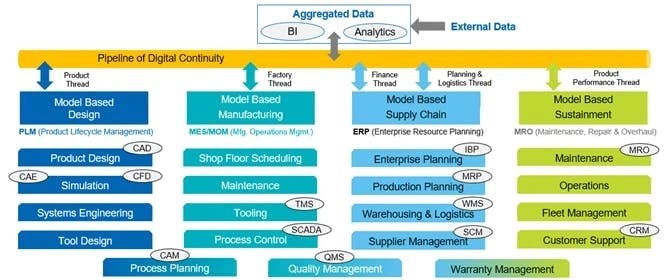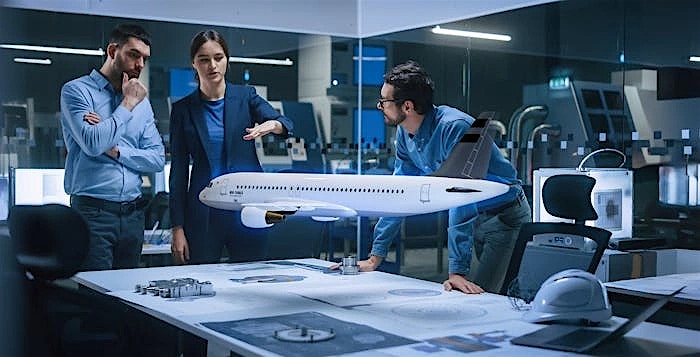Traditionally, the term model-based enterprise in the Aerospace & Defense (A&D) industry and other discrete manufacturing sectors has been associated with the virtual representation of product definition, the associated technical data and specifications within the engineering and manufacturing organization, as companies leverage 3D modeling and simulation to lower cost, increase quality and reduce time to market. The use of product lifecycle management (PLM), enterprise resource planning (ERP), and MES/MoM (Manufacturing execution systems/ Manufacturing operations management) tools in the Aerospace and Defense industry continues to remain an essential element of this model-based enterprise approach for rapid deployment of aircraft products and creating a holistic view of the entire value chain. However, this digital thread of data flow needs to mature beyond the product models, thereby synchronizing product modeling with enterprise models of planning, logistics, finance, and supply chain, which is what we call the Model Based Enterprise 2.0 (MBE 2.0).
MBE2.0 defines an integrated environment expanding beyond the product definition to an extended enterprise view that uses digital tools to define and optimize the digital threads in each of their functional areas.
In order to truly realize their journey to digital thread, aerospace and defense companies have to look beyond product performance and achieve competitive differentiation through monitoring and analyzing enormous amounts of information across the entire value chain, and not just engineering or manufacturing functions.

A modern Model-based Enterprise (MBE) must recognize that these functional digital threads across the extended enterprise must be integrated to optimize the flow of products as they morph from virtual definition and begin physically flowing through the value chain, reaching the customers. For example, the product data must be supplemented with transient, non-technical attributes such as cost and location that allow material planning, tracking, and financial reporting. Factory models must utilize this data along with models of production assets to effectively simulate and optimize throughput. During product operations (e.g. aircraft), data regarding the operating environment and performance of the product must be combined with the previous functional threads to optimize the performance and sustainment of products in the field.
MBE 2.0 facilitates the creation of a data-centric, networked enterprise with an aggregated “data bus” making data available to every node of the enterprise network including product, process, and business data to generate new insights through analytics.The ability to have those insights rapidly can be enhanced using digital technologies such as IoT, machine learning, and digital twins creating a holistic digital thread extending to suppliers as well as customers. This helps manufacturers with accurate demand forecasting and adjust their production rates accordingly. As technology and business need change, aerospace and defense companies will rely on solution providers who know how all enterprise systems (PLM, ERP, MES/MoM) work together and do not focus on one specific functional area.
HCLTech’s decision-making framework can enable aerospace companies to assess their existing applications and create processes that optimize interactions from the shop floor to their ERP systems. It empowers them to assess their future state requirements against commercially available platforms and recommends the best fit accordingly. Transitioning from a traditional Model-based Enterprise to Model Based Enterprise 2.0 (MBE 2.0) takes a balanced approach that builds upon the success of product modeling maturing into the rest of the A&D value chain. To know more about our solution check out this brochure (https://www.hcltech.com/brochures/ad-model-based-enterprise-20).


